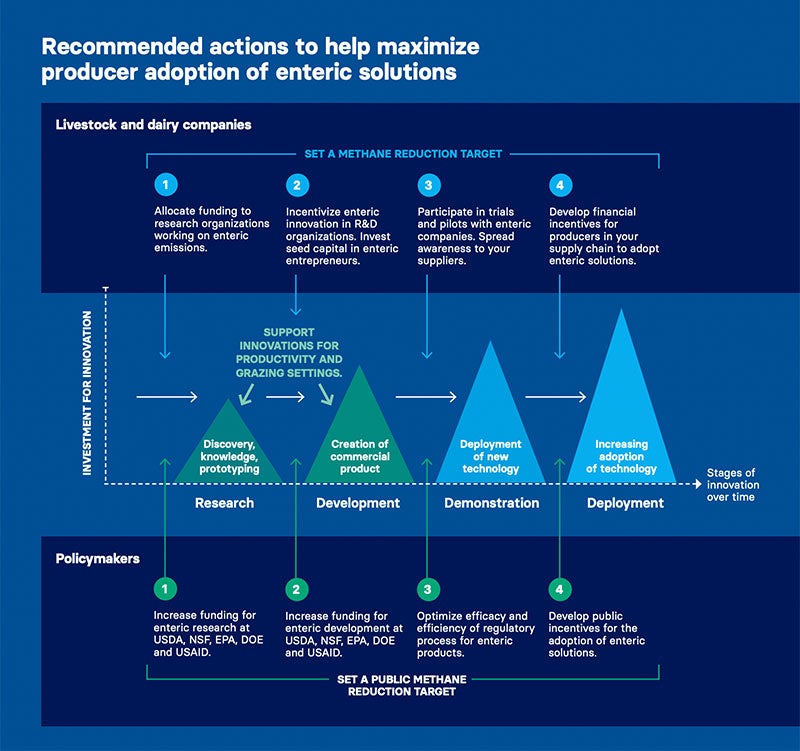- Resources
- How to design effective solutions for driving down enteric emissions
Resources
How to design effective solutions for driving down enteric emissions
Published: September 15, 2022 by EDF Staff
Methane is the climate opportunity companies and policymakers can’t afford to miss. In fact, reducing methane emissions is critical to slowing global warming in the near term and meeting net zero climate goals.
As companies and policymakers look to drive new opportunities to reduce agricultural methane emissions, understanding where producers are today and how to best address their needs is critical. Environmental solutions are often created in a vacuum, without the end-user’s, in this case farmers and ranchers, needs in mind, which can prevent adoption at scale.
EDF’s report shares new findings about dairy and beef farmers and ranchers’ perspectives on enteric methane emissions and mitigation solutions: how likely they would be to adopt an enteric solution today, what kinds of barriers would prevent them from doing so and what features or incentives could streamline implementation.
Get clarity on the most impactful opportunities to support enteric solutions, incentives and systems that will drive rapid adoption.
Key Findings
The research identified three primary reasons why farmers and ranchers are hesitant to adopt solutions for reducing enteric emissions.
- Producers currently have a low awareness of the climate opportunity around enteric emissions reduction and the solutions in development.
- There’s a lack of financial incentives needed to ensure adoption is economically viable on farms.
- There’s insufficient innovation in solutions, which prevents the usability, efficacy and applicability to achieving widespread adoption.
Companies that have dairy and beef in their supply chains and policymakers can help maximize producer adoption of enteric solutions by setting a methane reduction target and catalyzing innovation over time.

